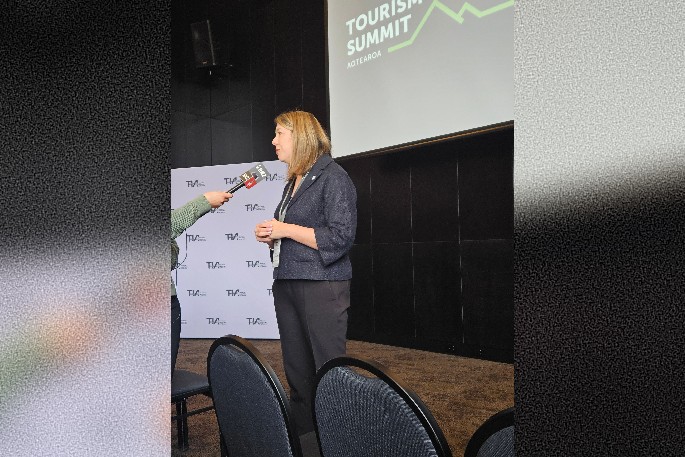At last week’s Tourism Summit Aotearoa 2023, TIA’s chief executive, Rebecca Ingram, spoke of the pressing need for increased government investment and a strategic partnership to boost the tourism sector in New Zealand.
This call comes at a crucial time with new government ahead, while the industry grapples with infrastructure challenges and a lack of sufficient data to drive policy and planning.
In Rebecca’s speech at the Summit, she says the Hokitika Gorge Swing Bridge serves as a stark reminder of the funding challenges facing tourism infrastructure. “The local council could not afford to upgrade it and while some extra funds were forthcoming from central government, it was not enough.”
At TIA, we were very happy when some more money from a tourism fund was found. “That bridge will benefit visitors, tourism businesses, and locals alike” she says.
With hopes for a shift in perspective on tourism funding, she also says that despite New Zealand being a significant export earner, the industry is predominantly composed of small businesses struggling for resources to reinvest in themselves.
“It’s no secret that the industry has been alarmed at proposed cuts to central government’s tourism budget – $60m over four years, and cuts to Tourism New Zealand that are disproportionate to what any other agency is being asked to find. Marketing New Zealand isn’t a luxury, without the work of TNZ, New Zealand risks being invisible in key markets around the world. That will impact more than tourism because their work has a halo effect on our whole export community. We should never assume the world is thinking about us.” says Rebecca
She says the economic contributions of tourism are substantial, with GST revenues from the sector capable of funding major public projects. Yet, the industry’s potential remains untapped, primarily due to inadequate funding and support mechanisms. Rebecca says TIA envisions a future where “the tourism industry can more deliberately shape its future with appropriate funding.”
This will enable local governments to invest in infrastructure and implement Destination Management Plans, and for the industry to have valued research and data and lift its own capability.” she says.
The debate on what form the funding mechanism should take, and is ongoing. TIA view is that it should be a national, fair, and efficient system over a fragmented approach. This sustainable funding mechanism is echoed by Kerry Prendergast, TIA’s Board of Directors independent chair, who calls the need for “consistency” and increased funding for tourism infrastructure.
Once the new government is announced, the tourism sector’s expectation is clear: a partnership that can design and deliver tourism fit for 2050. “Industry funding is a critical unlock for tourism,” says Rebecca.



